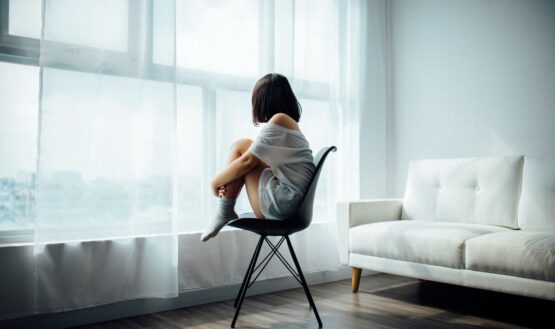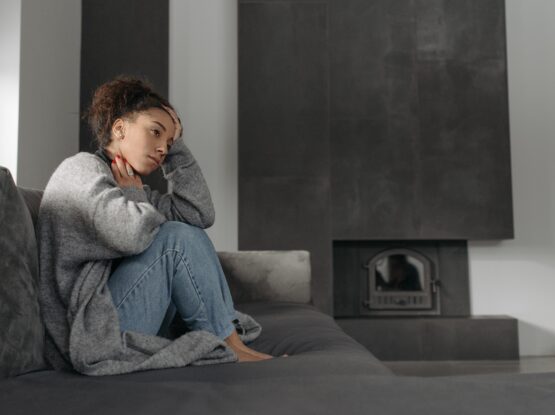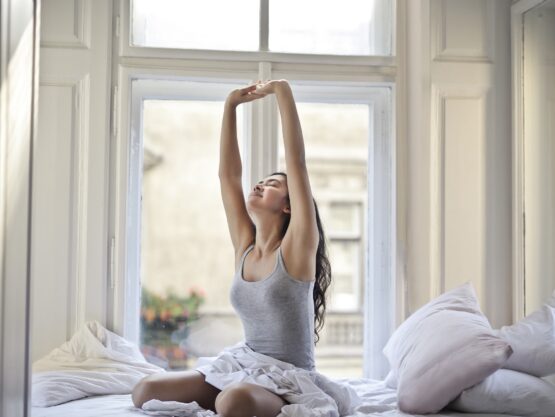Mental health & Cryostimulation
Relaxing natural
way to care about
your mental health
Local cryostimulation is
a natural gift in fighting
such mental
issues like:
● Depression
● Anxiety
● Migraine
● Insomnia
In fact, in the United States alone, the disabling effects of anxiety disorders have significantly brought a major impact to the lives of 40 million adults age 18 years and older (Anxiety and Depression Association of America, 2016).
Furthermore, in the year 2014, it was also estimated that there were 15.7 million adults, which equates to 6.7% of the total adult population in the U.S., who suffered at least one major depressive episode in the past year (National Institute of Mental Health, 2015).
Medical management for both anxiety disorders and depression includes cognitive behavioral therapy (CBT), a variety of medications and other complementary and alternative remedies. However, although treatment options for anxiety disorders are widely available, only a few receive prompt and adequate intervention due to several factors such as a low perceived need, desire to handle the problem by oneself, self-stigma and label avoidance (Andrade, et al., 2013).

With the emergence of cryotherapy as an adjunct treatment for various mental disorders such as those mentioned above, we can expect an improvement in both somatic and psychological aspects of general wellbeing and eventually, in anindividual's quality of life.
In a preliminary report presented by a Polish research team, it was revealed that cryotherapy induced relaxation, mood elevation, memory enhancement, an improvement in vigor, a significant decrease in tension and fatigue and a boost in energy levels (Rymaszewska, Bialy, Zagrobelny, & Kiejna, 2000).
Along with mood improvement, there is an increase in self control, which may significantly increase the effectiveness of the undertaken treatment and rehabilitation.
In addition, this premise was supported by the results of another study which showed that 15 sessions of cyclic short term cryostimulation sessions with temperature ranging from -80°C to -160°C degrees, can actually reduce both depressive and anxiety symptoms and improve life satisfaction (Rymaszewska, Ramsey, Chładzińska-Kiejna, & Kiejna, 2007)
Such benefits are said to be related to the influence of cryostimulation on hypothalamic pituitary axis (HPA) and monoamine regulation, increased B-endorphin levels, hippocampal brain derived neurotrophic factor (BDNF) normalization, and improved perceptions of self efficacy (Rymaszewska, Ramsey, & Chładzińska-Kiejna, 2008).
Through the regulation of the HPA, the body becomes capable of initiating an adaptive response in times of stress, which includes behavioral changes such as increased awareness, improved cognition, euphoria, and enhanced analgesia (Smith & Vale, 2006). On the other hand, the normalization of BDNF acts as an essential regulator of cellular processes that improves cognition, complex behaviors, learning and memory.
Therefore, any intervention, such as cryostimulation, that alters BDNF pathway can potentially exert notable benefits on various neurological and psychiatric conditions (Lu, Naggapan, & Lu, 2014).
As a result cryostimulation has appeared to have a significant impact on the improvement of patient's wellbeing, mood, and quality of life. The observed improvement is independent of the age of the patients. An increased effectiveness of cryotherapy was observed in women, people with spinal pain and patients with severe depressive symptoms.
Along with mood improvement, there is an increase in self control, which may significantly increase the effectiveness of the undertaken treatment and rehabilitation.
It is a well known fact that holistic solutions that don't involve pharmaceutical drugs
- can help people with mood disorders, and Cryostimulation is one of them.
Exposure to ultra-cold temperatures during a Cryostimulation session causes physiological hormonal responses.
"Happy'' hormones, like adrenaline, noradrenaline and endorphins flood the system and the negative impact of an elevated level of cortisol (a stress inducing hormone) is significantly reduced.
Patients feel euphoric when their brain is released from the crippling grip of cortisol.
They enjoy sensations of relaxation, mood elevation, memory enhancement, newfound energy and improved sleep, which may last several weeks from just one session with our Cryo-T 2.


The use of cold therapy (ice packs, ice head baths, cold compression wraps etc.) to treat migraines have been popular all over the world for over 150 years.Cryotherapy can help treat migraines by stimulating and numbing nerves in the neck and head area. A rapid exposu-re of an extreme cold on the head and neck constricts the blood vessels (vasoconstriction & vasodilation), thereby reducing inflamma-tion and sensitivity of pain conductive nerves Melzack-Wall "theory of control gates").One study found that applying cold to the carotid arteries in the neck significantly reduced migraine pain in those tested.It's thought that this works by cooling the blood passing through intracranial vessels.The carotid arteries are close to the skin's surface and accessible for cryostimulation.In most cases cryostimulation is helping patients suffering from chronic migraine episodes to find quick relief via this treatment or get rid of it.
Sleep disorders are typically characterized by symptoms like inability to relax in bed, anxious thoughts, inability to get into a comfortable position, muscle tension, vegetative symptoms like palpitations etc.
The result of chronic insomnia is fatigue and tiredness the day after. Vital organs too suffer from this lack of rest because the healing and recuperative functions that take place at night have also been compromised.
Cryostimulation has shown to be quite effective in balancingdisrupted sleep patterns. Patients suffering from primary sleep disorders can achieve increased muscular metabolism and psychological calm that helps them sleep and stay asleep during the night.
Patients with secondary sleep disorders report significant pain relief.
Results vary, of course, from person to person but improvements have been observed after even a week of daily 3-minute session using Cryo-T 2.
